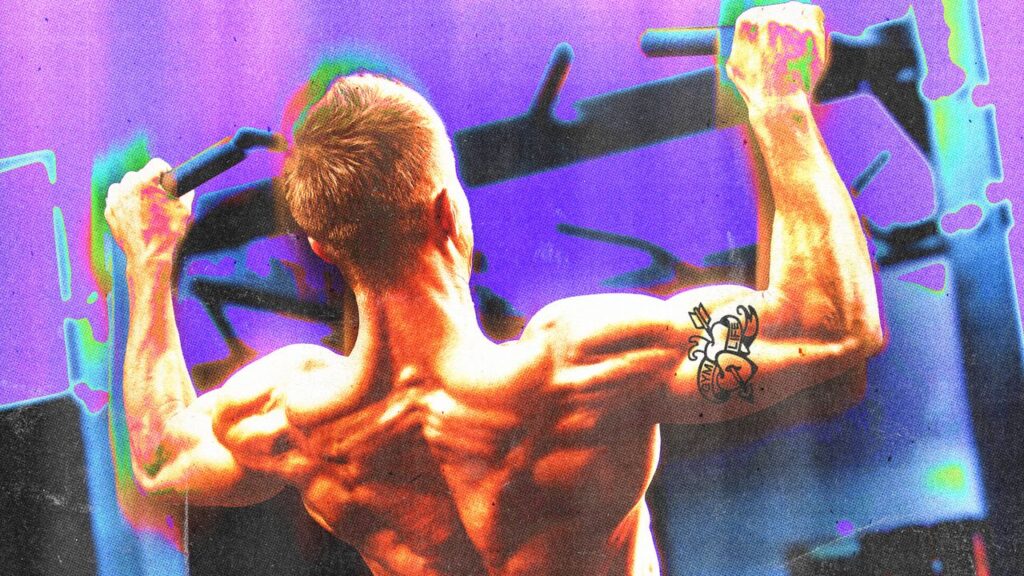“A pull-to-push ratio of 2-3:1, with two to three pulling reps for every one pressing rep is ideal,” says Telegadas. “Don’t forget, if you’re only working out your upper body you’re leaving a lot of gains left on the table.”
Adding in lower body sessions in between your push-pull splits not only encourages a more rounded physique and level of ability, but also gives your poor chest, back, and arms time to recover.
The best upper body strength exercises to incorporate into your routine
Looking to boost your repertoire beyond the bench press? Here, Telegadas and Santos recommend their favorite upper body exercises with tips on getting them right.
Incorporate them into your routine as required, making sure to follow a balanced plan as described above.
Bench Press
“This is everyone’s favorite, so try to get it right,” says Santos, who stresses the importance of performing the movement with maximum control. “Focus on time under tension and earn the right to progress the weight,” he says. “As a general rule, ensure the bar touches your chest and you fully extend your arms to complete the repetition.”
Incline Bench Press
A variation on a classic, Telegadas advises the incline press as a great substitute for those struggling with the flat bench. “Common mistakes are the same as in the normal bench press,” he says. Make sure to go deep with each rep, take your time, and remember the incline press should land a little higher up the chest.
Z-Press
“This is a fantastic vertical push movement that will help develop shoulder and tricep strength while challenging your overhead and core strength and stability,” says Santos. Pick a medium to light weight, sit on the floor with your legs stretched in front of you, keep your chest tall and perform a traditional shoulder press while keeping in position.
Chin-Ups/Pull-Ups
Both bar exercises have enormous benefits for your core, back and shoulders. And both can be tough to get right. A band can help take your weight to start with. “Errors in the pull-up or chin-up include: not descending (elbows locked out), pulling with one side more than the other, and kicking (kipping) the knees so they can use some momentum to complete a rep,” says Telegadas. In other words: no CrossFit ‘pull-ups’ here, please.
Bent Over Barbell Row
“Rowing is fantastic for building the upper back,” says Telegadas. It also makes for a great super set with press-ups or bench press, helping balance out tight backs. “The main goal is to retract the shoulder tightly and pull the bottom of the plates/dumbbell to the hip. Common [mistakes] are descending too quickly, losing tension in the upper back, and not going through the full range of motion.”
Cable FacePulls
Another simple but effective move. Attach the rope accessory to the cable machine and position the cable at face height. Start with your arms extended in front of you parallel to the floor. “Brace your shoulder blades by imagining you are trying to hold a $10 bill between them,” advises Santos, “then pull the rope towards your face, flaring your elbows out as you do so.” Hold the weight for a moment, then slowly return the rope to the start position.
Cable Tricep Extensions
While you’re working with the cable machine, why not give your triceps some love? Instead of pulling the rope extension into your face, you’re going to push straight down, flaring your arms slightly at the bottom. Aim for lighter weight, higher reps here. “Common errors include not controlling the movement and not extending the elbows to feel a ‘squeezing’ of the muscle at the end range of motion,” says Telegadas.
Single arm concentration curls
“This is my favorite bicep exercise,” enthuses Santos. Sit on a bench and grab a light to medium weight. Keep your arm tight to the bench and raise the dumbbell staying in control of the dumbbell and squeezing the bicep until the dumbbell reaches the top of its range of motion. “The eccentric portion of this exercise is where the magic happens,” says Santos. “Slowly lower the dumbbell in a controlled manner until your arm returns to its fully position.
This story originally appeared in British GQ.


